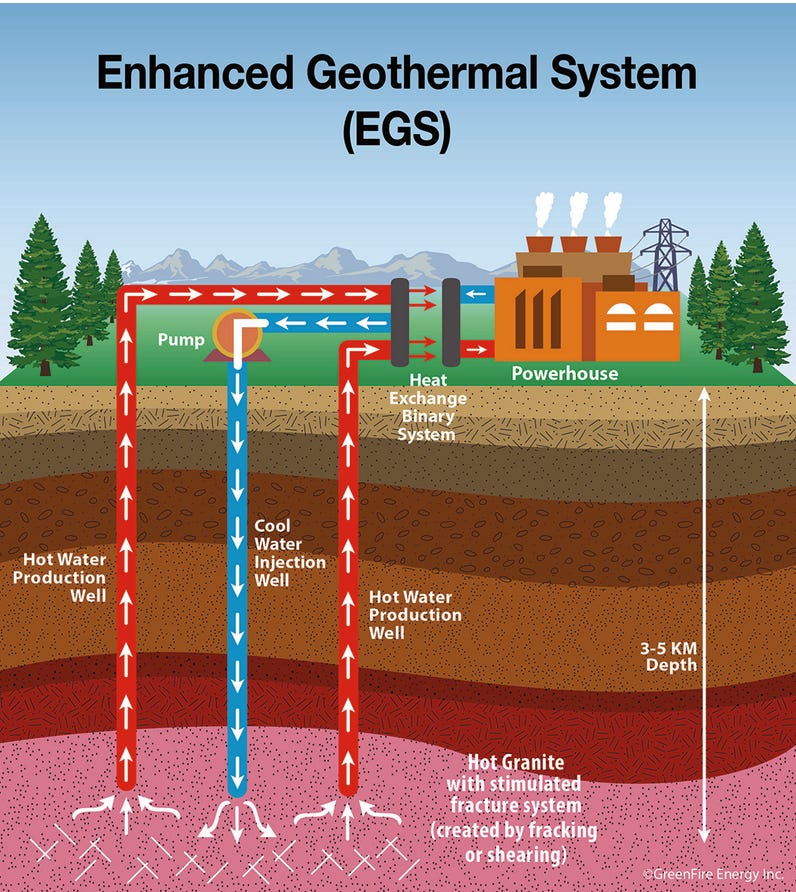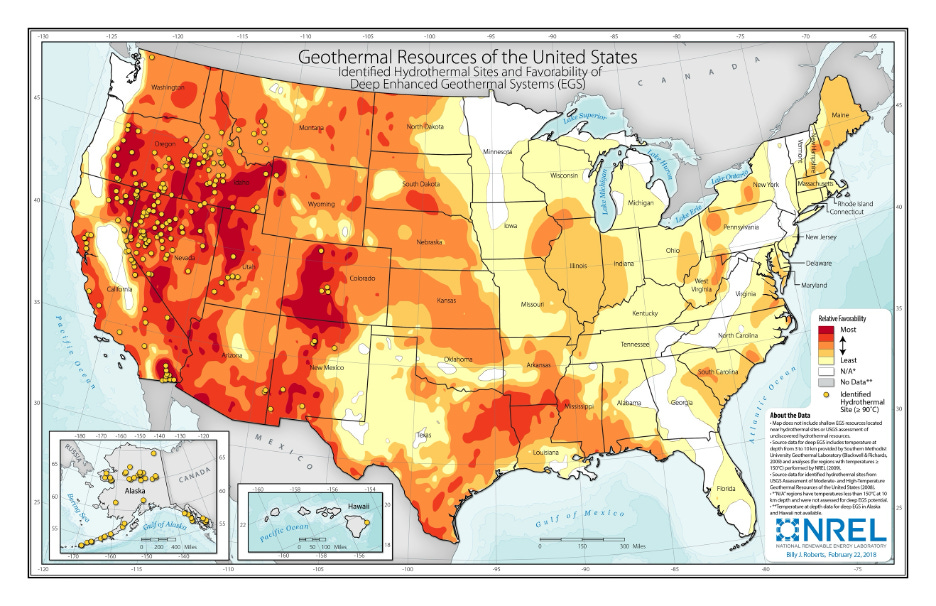Xeroxing Iceland
The promise of next gen geothermal
Until very recently, geothermal energy could be conceptually classified as cool but something that only works in a few places, perhaps most famously Iceland. Because of where it sits on the Earth’s tectonic plates and other geological factors, magma relatively close to the surface heats underground water systems, creating the hot springs and geysers that Iceland is famous for. It also means that hot water and steam are often found at shallow depths (sometimes just a few hundred feet down), making it economically viable to tap into. And so, geothermal provides about 2/3 of the country’s energy supply. This has been great for Iceland but most places do not have these special geological features to make geothermal financially viable, which is unfortunate since it’s carbon-free and hyper abundant (at least in theory).
But what if lots of places could be Iceland? Wouldn’t that be awesome? That’s the promise of next generation geothermal.
How Enhanced Geothermal Systems (EGS) Work
The breakthrough that is allowing next generation geothermal to happen is….wait for it….hydraulic fracturing. That’s right- fracking to the rescue! The same technology that unlocked the shale oil and gas boom is at the heart of next generation geothermal. Engineers drill down several miles into hot rock formations and inject water at high pressures to create a network of tiny fractures. This creates the permeability necessary for it to work. Water is then circulated through an engineered reservoir, heated by the surrounding rock, and brought back to the surface as steam to drive turbines. Voila! Energy. Clean, essentially limitless, energy.

This kind of geothermal is starting to come on-line now. For example, Fervo Energy’s project in Utah is now operational, will start delivering power to the grid next year, and reach full scale production in 2028. FORGE is also advancing the industry by it’s at the leading edge of drilling innovation that are cutting both time and costs. It’s worth noting that part of what gives the United States an edge in next-gen geothermal is our expertise in drilling from the natural gas and oil industries.
One form of EGS is becoming even more advanced: ‘closed loop’ systems. Instead of fracturing rock and pumping water through underground reservoirs, closed-loop systems circulate an advanced working fluid (with superior heat-transfer properties compared to water) through a sealed pipe network that extends deep underground. Think of it as a massive underground radiator: the pipes absorb heat from the surrounding hot rock and carry that steam back to the surface. Eavor, a Canadian company, has shown that they can make this work, so it is moving from cool concept to commercialization. While not yet cost-competitive with wind and solar for electricity generation, it is already competitive for district heating in colder climates where heat pumps are less efficient.
Closed loop systems aren’t always superior to other forms of EGS (they have their own technical challenges such as how hard and costly it is to drill many horizontal lines at great depths). Still, just as EGS makes sense as part of the energy portfolio, closed loop makes sense as part of the EGS portfolio.
Next generation geothermal is still a younger technology, but hopefully, as with many other technologies, costs come down over time as the industry moves down the learning curve. If that happens, then it can be an important part of the energy mix of the future.
This Could be Hugely Beneficial
What makes this such a revolution is that EGS can work in far more places than traditional geothermal. Here’s a map of favorable places for EGS in the U.S. As you can see, the interior West has substantial geothermal potential.

The economic potential is enormous. The National Renewable Energy Laboratory estimates that by 2035 we could have 38 gigawatts of geothermal energy production capacity. To put that in context, the U.S. has about 97 gigawatts of nuclear energy capacity and that produces about a fifth of all U.S. electricity.
Americans want an all-of-the-above energy strategy. This is part of that. Adding geothermal energy to our supply portfolio saves money for consumers and businesses, and provides jobs for people in the geothermal industry, and it’s totally clean energy. It’s a win-win for everyone.
But geothermal still faces some important challenges…..
Permitting and Transmission Headwinds Remain Significant
The first obstacle is our electricity transmission system. We do not build nearly enough high-capacity electricity transmission lines to move clean energy from where it’s made to where it’s needed. I wrote a whole article on this problem a few months ago. Today, this transmission issue is a big problem for wind and solar. If we do not fix it very soon, in the not too distant future, it will also be a problem for next generation geothermal. The Cape Station plant in Utah, for instance, is limited by transmission capacity.
The second obstacle is permitting. If you look back at that map above showing geothermal potential, you notice that it’s mostly in the West. The federal government owns the vast majority of that land.
Geothermal projects on federal land have had to go through as many as six NEPA reviews and can take 5 to 10 years to get permitted. Fortunately, some policymakers are already on this and have some good ideas. A great, already proposed reform is the STEAM Act which gives geothermal the same categorical exclusions on federal land that oil and gas have. It’s a bipartisan bill sponsored by Senator Cortez-Masto (D-NV) but also co-sponsored by Senators Daines (R-MT), Murkowski (R-AK), and Hoeven (R-ND).
The HEATS Act would also help by clarifying that geothermal operators do not need a federal drilling permit for wells that are on state and private lands. Finally, Section 208 of the Energy Permitting Reform Act, which unfortunately was not passed last year, also had helpful provisions: it would have further streamlined permitting for geothermal exploration, required annual geothermal lease sales, and set deadlines for consideration of geothermal drilling permits.
If we can get sufficient transmission infrastructure built -admittedly something we struggling at terribly- and reform geothermal permitting through the STEAM Act, the HEATS Act, and passing EPRA’s provisions, there’s every reason to believe that geothermal can take off the way wind and solar have and be a quite valuable addition to America’s energy supply.
-GW



